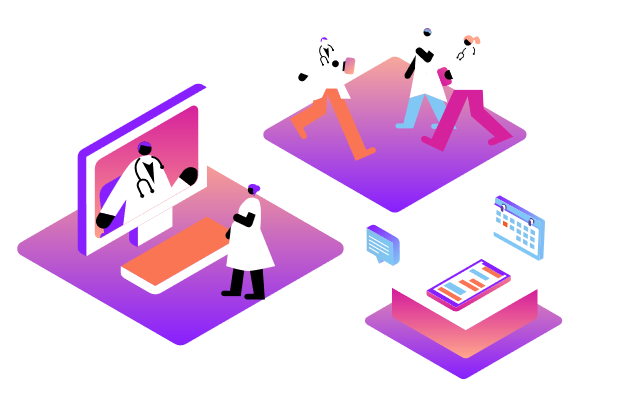Telemedicine is Making Healthcare More Accessible to More People
Guest Authored by Lawrence Byrd, Communications APIs, Vonage
 The universal plea to stay at home and practice social distancing has forced many people to cancel routine check-ups and procedures. With doctors being inundated with COVID-19 cases and people wary of visiting a doctor’s office which may expose them to the virus, this is understandable. However, not receiving the treatment you need can have serious repercussions. Fortunately, telemedicine has emerged as a vital way for doctors to continue to consult with their patients remotely.
The universal plea to stay at home and practice social distancing has forced many people to cancel routine check-ups and procedures. With doctors being inundated with COVID-19 cases and people wary of visiting a doctor’s office which may expose them to the virus, this is understandable. However, not receiving the treatment you need can have serious repercussions. Fortunately, telemedicine has emerged as a vital way for doctors to continue to consult with their patients remotely.
Telemedicine empowers doctors, nurses, and other wellness professionals to reach patients who might otherwise not receive the specialized care they need, and its use has exploded. For example, Doxy.me, a cloud-based electronic medical records (EMR) and telemedicine solution, reported 139,000 new providers and 1.35 million patients using telemedicine in just a week. But they are not alone. Here’s a look at five unique few ways telemedicine is increasing access to health and wellness services.
Added Expertise
While emergency care staff is skilled and highly trained, there are times when they need to call upon specialists to diagnose and treat patients. Telehealth systems make it possible for ER staff to access specialists who can provide consultations or education in real-time through live video. On a macro scale, for instance, a doctor at a teaching hospital in New York can discuss new research with specialists in Los Angeles and China through a real-time, multi-party video call, all while live-streaming the educational conversation to hundreds of medical students via a video platform. On a smaller scale, video APIs allow doctors to call on specialists from around the world for quick consultations, improving the quality and speed of emergency care, while also reducing costs and re-admissions by diagnosing patients more accurately the first time around.
Keeping the Doctor Away
Despite significant advances in healthcare, chronic diseases are becoming increasingly prevalent and costly. In fact, RAND reports that 60 percent of American adults suffer from at least one chronic illness. Telemedicine technology can help these individuals revamp their lifestyle habits to improve their health.
For example, patients can now receive personalized nutritional counseling or take healthy cooking classes at their convenience through live video. With the right APIs in place, educators can follow up on video classes through voice or SMS messaging, using an effective communications portfolio to reach patients through multiple preferred channels. The ability to interact in real-time also enables patients to ask timely questions, further increasing the efficacy of the treatment.
Medical Advice in Any Language
Language should never be a barrier to receiving healthcare. With the right video telehealth systems in place, patients can access medical interpreters in any language, facilitating better physician-client communication and working to eliminate misunderstandings that can get in the way of treatment.
In the case of patients with hearing difficulties, a live video feed is even more critical, as non-verbal communication can be extremely helpful for both parties. With video calls, doctors can rely more on body language and facial expressions to communicate diagnoses and treatment plans, providing high-quality, empathetic care to all patients no matter what their situation may be.
In-Home Counseling
Although mental and behavioral health have gained more traction as important components of an individual’s overall well-being, these types of care are not always easy to access. Online counseling through live video sessions can help patients overcome the barriers to mental healthcare by allowing them to speak with professionals on secure networks in the privacy of their own home. What’s more, patients can use their preferred device to interact with counselors, making the video call adapt to the environment most comfortable for them. This kind of flexibility has a multitude of benefits, including creating a safer, more comfortable environment that promotes open, honest, and productive counseling.
Providing Critical Care
Telemedicine technology extends its benefits even to some of the most at-risk patients — those in intensive care. Using tele-ICU systems, hospitals can centralize real-time patient monitoring through remote observation. If the patient requires urgent care, they can reach on-site staff and specialists instantly, allowing for a more efficient allocation of hospital resources.
Ultimately, telehealth makes treatment more accessible to more people. Whether that means helping people understand if they have been infected with COVID-19 or assisting someone struggling with chronic disease and mobility issues, the outcome is better health overall — and that’s just what the doctor ordered.
Lawrence Byrd is an industry-leading technology evangelist for communications APIs with cloud-communications-provider Vonage.

